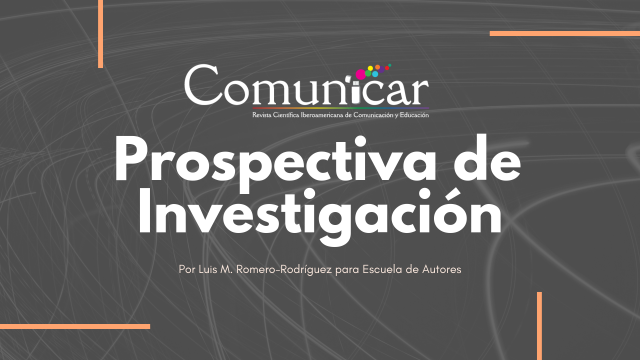Author: Luis-Miguel Romero – Translation: Erika-Lucia Gonzalez-Carrion

Science advances in steps, not leaps
Thomas Macaulay
Knowledge is, in essence, an evolutionary social construct. It is to say; everything that we know today (from a table, a laptop, a plane or a pill) has been built in progressive advances of the human ingenuity in form of sciences, arts or trades.
Of course, these advances would not be more than isolated and restricted knowledge if there were no means of communicating progress. This is where we go into the subject of the prospective of research, as a recommended way to contribute in the direction of future developments; more specifically to the conclusions section of a scientific article, which more or less standardized structure requires us to: i) Summarize the most significant findings of the research (synthesis of contributions); ii) Check these findings in light of the theories and the state of the matter presented previously (discussion); iii) Present the limitations of the study and; iv) Determine future lines of research (prospective). In this post we will concentrate on this last section of the conclusions.
Where is the future?
When we believed that we had all the answers, suddenly, all the questions changed.
Mario Benedetti.
All research word contributes, in greater or fewer measure, to answer some questions about a topic and to solve some doubts, but in a simultaneous way generates new questions, ideas and emerging lines of work.
Research prospectives are found generally at the end of all scientific text (it is the last section of a conclusion), although there are journals that request that they are found in a part of the abstract or as final notes.
The goal of this part is not another one than the one of facilitating the concentration of investment and research efforts in areas in which researchers have identified new possible ways to get complementary findings or new objects.
Examples of writing of prospective
Roses, S. & Humanes-Humanes, M. (2019). Conflicts in the professional roles of journalists in Spain: Ideals and practice. [Conflictos en los roles profesionales de los periodistas en España: Ideales y práctica]. Comunicar, 58, 65-74. https://doi.org/10.3916/C58-2019-06
Among the future developments of this line of research, it is worth mentioning the comparative analysis of the gap with other countries, the replication of the design with a sample of professionals from different media supports (radio, television, digital native diaries and social networks) and observation and analysis of the real gap between the conception of professional roles and their materialization in the contents.
Garmen, P., Rodríguez, C., García-Redondo, P. & San-Pedro-Veledo, J. (2019). Multiple intelligences and video games: Assessment and intervention with TOI software. [Inteligencias múltiples y videojuegos: Evaluación e intervención con software TOI]. Comunicar, 58, 95-104. https://doi.org/10.3916/C58-2019-09
Facing future lines of work, it is expected to apply the methodology for the design of games that allow to cover different age groups, as well as to verify the validity and reliability of TOI for the intervention with groups of specific educational needs, such as high-level skills or ADHD.
